The uniqueness of swans makes them identifiable among other birds. These majestic creatures are the largest members of the goose family. That may not sound like something new to you. However, these invasive species have some facts you might not have heard about before. Undoubtedly, swans complement any terrain you find them, adding elegance and beauty to it. It doesn’t matter whether they are paddling on water or walking on land; they speak tranquility in large volume.
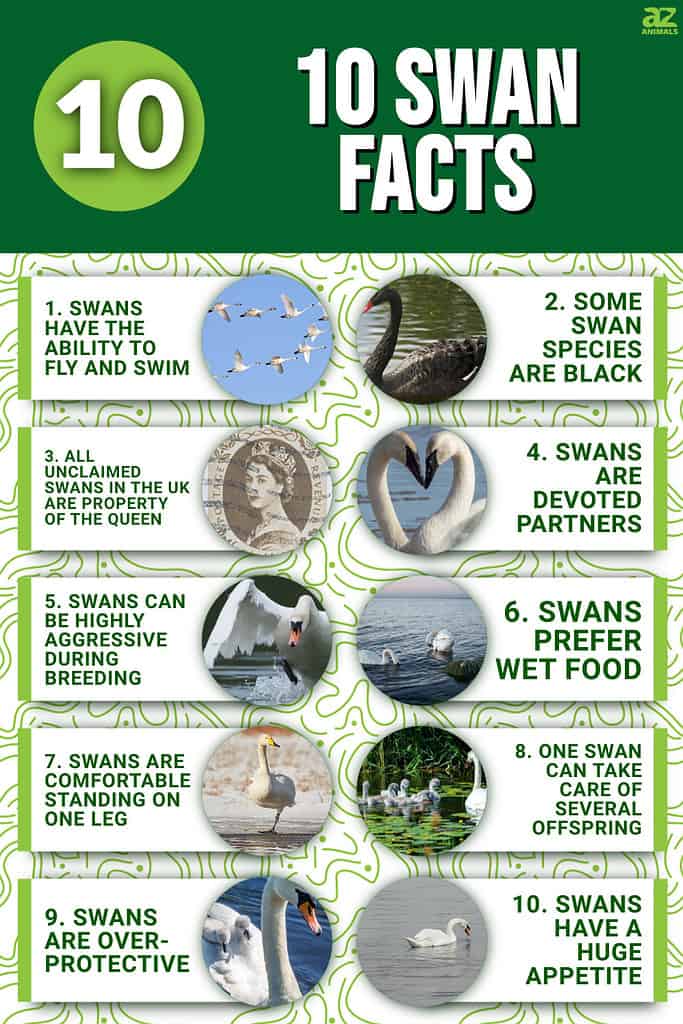
Those are a few characteristics of the beautiful waterfowl birds. Now, let’s reveal some insight about swans that can make your jaw drop.
1. Swans have the ability to fly and swim
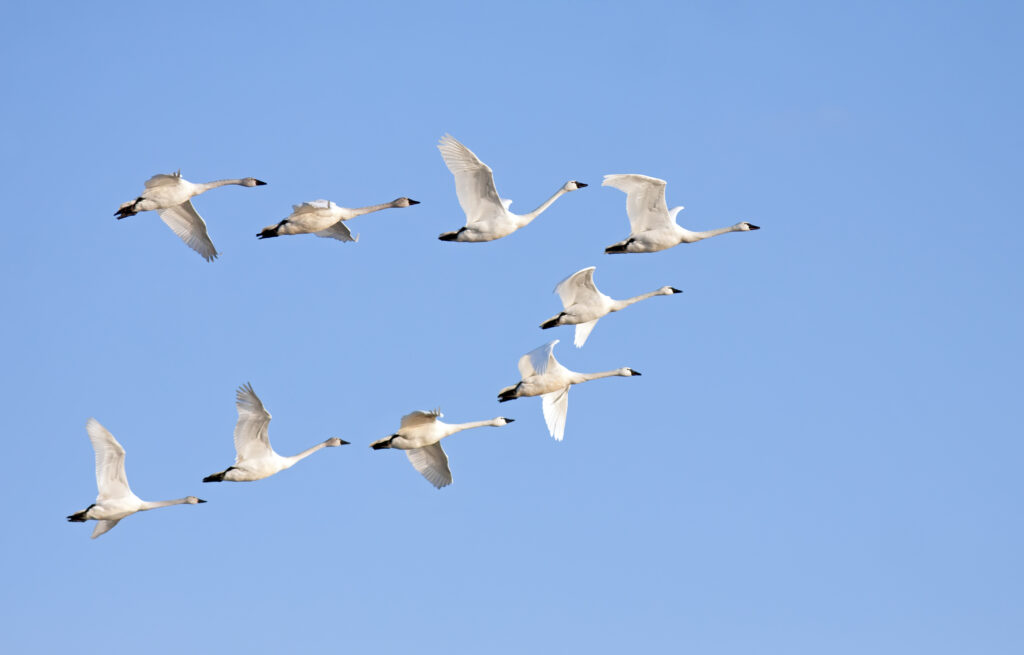
Apart from being able to swim effectively, swans are very skillful when in the air.
©Delmas Lehman/Shutterstock.com
Although hefty, the beautiful waterfowl birds are highly skillful when in the air. Surprisingly, a few fly at unbelievable speeds of about 70 miles per hour. The average speed a typical swan can fly is about 50km per hour. Their rapid gliding in the air is possible because of their wingspan of over 10 feet.
Swans also perform well in lakes, rivers, and ponds, irrespective of the water currents. They can move really fast in water at a speed of about 1.6 miles per hour. Some of these invasive species, especially the mute swans, use their huge webbed feet to paddle seamlessly.
2. Some swan species are black

Black swans can be found swimming in Slovakia.
©efirm/Shutterstock.com
If you are not a traveler, you might not know about black swans because they are not everywhere. The citizens of Australia, New Zealand, and a few countries can relate to this. There is no difference other than the color. Before now, these majestic birds had many species, but today, only six types exist worldwide.
One thing about the black swan you might not know is that there is a law prohibiting the release of these unique birds into the wild. Additionally, they can mate with the white species successfully.
3. All unclaimed swans in the UK are property of the Queen

The Queen is mother of all mute swans.
©© Getty Images/ via Getty Images
As pronounced by the Queen of England in the 12th century, all mute swans are owned by royalty. That decision birthed swan upping, a ceremony to count the beautiful waterfowl birds. It usually comes up in the third week of July. The event lasts for five days.
Surprisingly, the Queen hardly graces the ceremony despite claiming to own all the mute swans in the UK. Some people find it confusing how a Queen can be the owner of all the birds. It was due to the rate at which the UK citizens ate swans as prized food at feasts. It happened over a century ago.
4. Swans are devoted partners
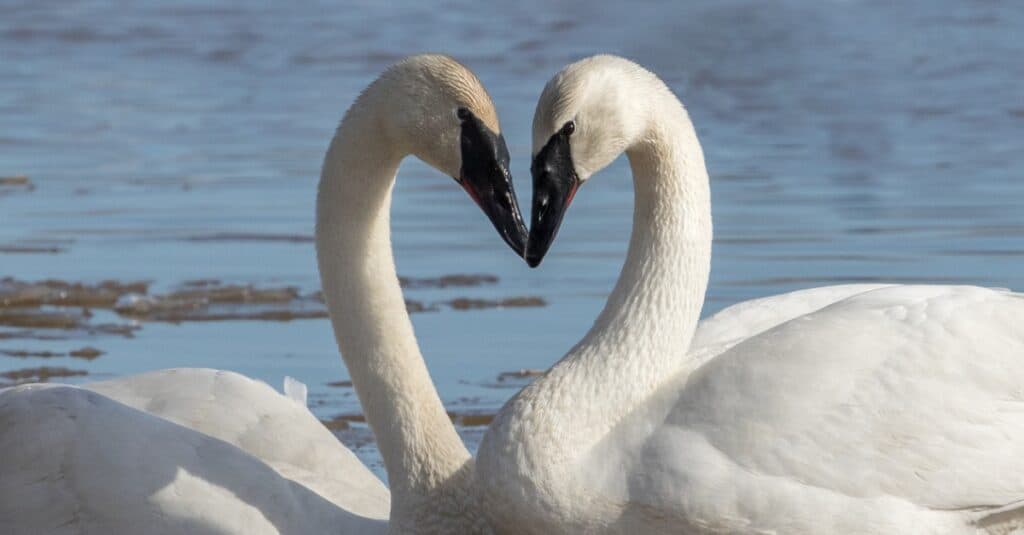
Swans are faithful to their partners beyond what we see in human relationships today.
©iStock.com/Dee Carpenter Photography
At maturity, a swan chooses a mating partner and sticks to it for the rest of its life. They are monogamous and committed to having offspring with the selected opposite gender. The way they bond is not something you see in other birds. An animal expert believed that swan courtship signifies true love.
It’s incredible how these majestic creatures are faithful to their partners beyond what we see in human relationships today. However, some situations like breeding failure may lead to the separation of two love birds.
5. Swans can be highly aggressive during breeding

Swans can be dangerous birds if they feel threatened.
©Tone Trebar/Shutterstock.com
Although friendly and adaptive, swans can be territorial when it’s their time to breed. If anyone comes within close range at this moment, they won’t hesitate to attack. They prefer to interact with their mate only when the breeding season comes around. Sometimes, the waterfowl birds can be aggressive towards the cygnet.
Research has it that swans’ aggression is towards other invasive species regarding available resources. It is not unusual to see adults competing for food or territory.
6. Swans prefer wet food

Swans prefer eating on the water to make the meal wet for easy consumption.
©OlegRi/Shutterstock.com
These birds cherish eating on the water to make it wet for easy consumption since water accompanies the food while picking it on the surface. Swans that feed on land are susceptible to environmental dangers. For example, they can swallow stones and particles that can harm them.
Another reason feeding on land is not ideal for the birds is to keep them safe from predators. That does not mean they cannot feed on grass. Amazingly, this invasive species can eat potatoes and spinach.
7. Swans are comfortable standing on one leg
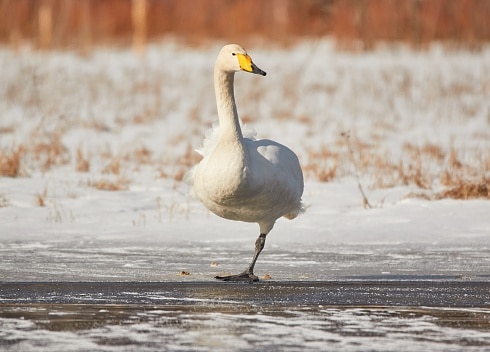
Swans will stand on one leg to regulate their body temperature.
©Teemu Tretjakov/ via Getty Images
Occasionally, some of these majestic creatures can fold one leg and stand with the other. Without looking closely, you might think the swan lost its leg. That is not the case as they have the special ability to hide one leg. It’s normal for the animal to be in that position for several minutes.
One reason they do this is to absorb heat with the large surface area of their foot. That usually happens when they are in places that require adjusting their body temperature. They are specially created animals.
8. One swan can take care of several offspring

Female and male swans can take turns incubating eggs.
©Sergei25/Shutterstock.com
The separation between mating partners does not always happen. But when it occurs, one of the pairs can take care of the eggs and nest. One may die or sometimes disappear without returning. That leaves the other swan with the responsibility of incubating the eggs. It doesn’t matter if it is the pen or cob.
Female swans feast adequately before incubation because of the difficulty associated with feeding during the nesting period. That makes it easy to keep the egg warm without starving, even if the male is away forever. The same goes the other way too.
9. Swans are over-protective

Swans do everything they can to keep the cygnets safe.
©iStock.com/Lemanieh
Swans will do everything they can to keep the cygnets safe, as much as they display aggression when protecting their territory. The large birds flap their hefty wings and hiss simultaneously when they notice threats. If they are victorious, they celebrate in the best way they can by fluttering their wings.
It shows how much they adore their offspring and would face intruders that come closer to them. It’s not just the female that does this; the male also offers their support.
10. Swans have a huge appetite
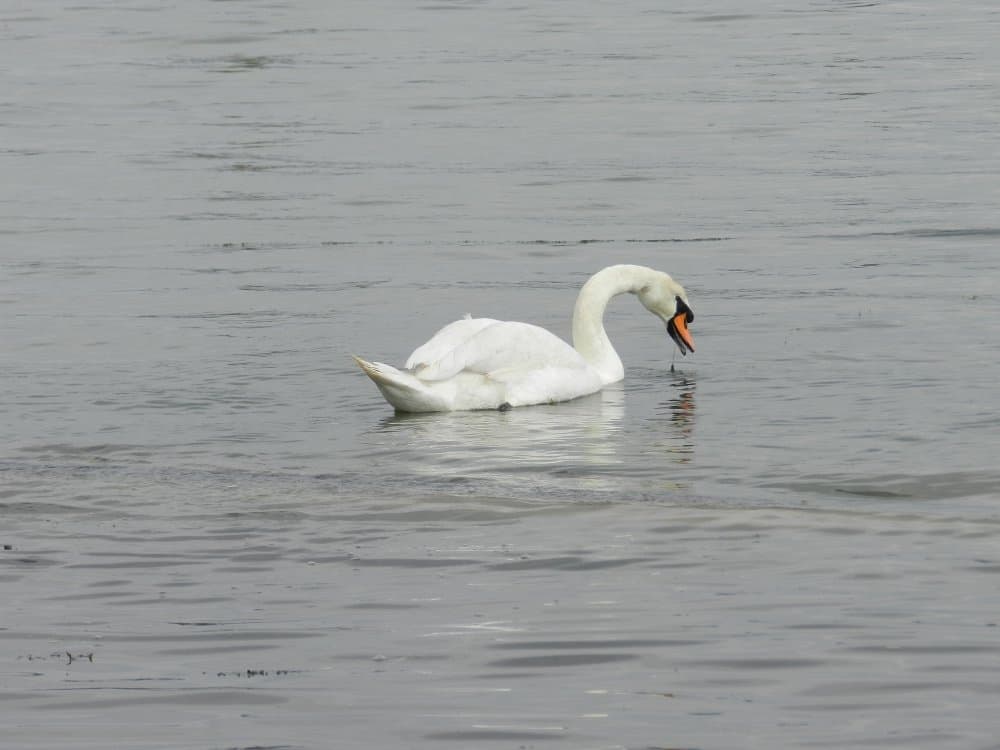
Swans prefer to feed in the deep wetlands.
©Millie Bond – Copyright A-Z Animals
Among the six species, some are herbivores, while others are omnivores. Swans can eat as much as eight pounds of food, given their sizes. That is understandable because they are massive birds that weigh as much as 30 pounds. That requires eating up to one-quarter of their body weight daily.
Their nutrient needs during the day induce them to eat enough. These beautiful waterfowls prefer to feed in the deeper parts of the wetlands, where there is no competition.
The photo featured at the top of this post is © iStock.com/Dee Carpenter Photography
Thank you for reading! Have some feedback for us? Contact the AZ Animals editorial team.






